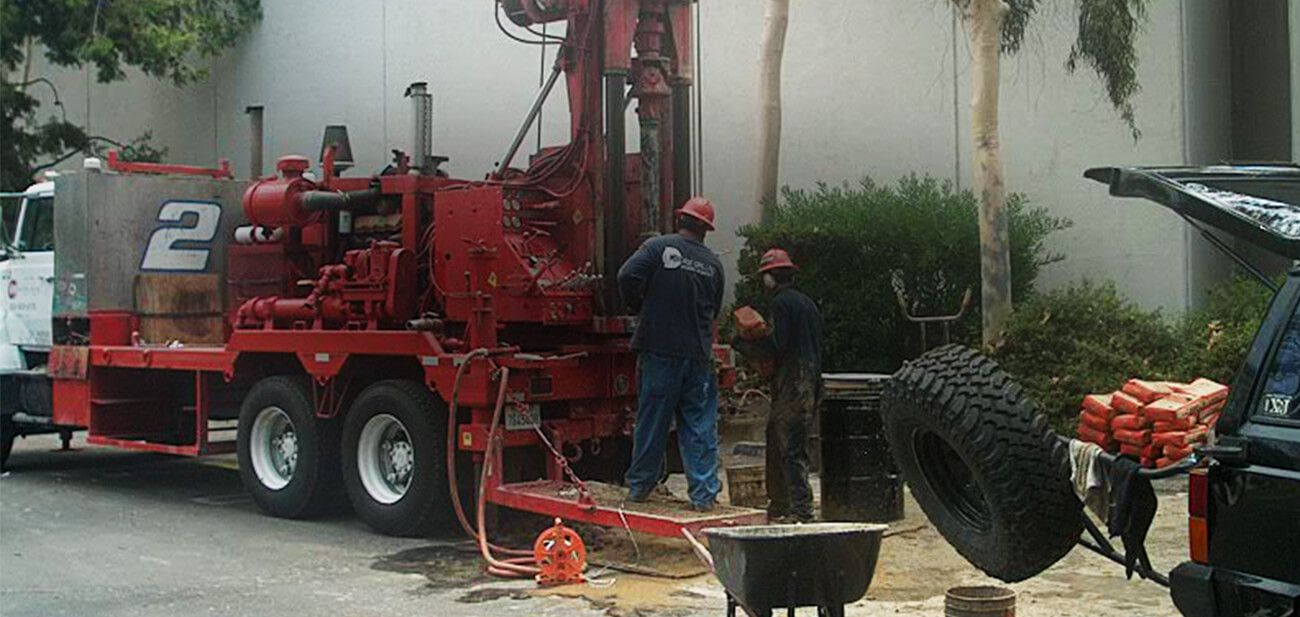Diving Into Geotechnical Providers: the Essential Duty of Dirt Analysis, Earthquake Danger Analysis, and Geosynthetics in Structure Sustainable and Safe Structures
Soil evaluation, quake danger assessment, and the execution of geosynthetics are essential elements that guarantee the integrity and long life of structures. By recognizing the composition of the dirt, anticipating seismic risks, and integrating cutting-edge materials, engineers can reduce risks and boost the durability of infrastructure.

Importance of Soil Evaluation
Recognizing the significance of soil evaluation is crucial in guaranteeing the architectural honesty and stability of any building task. Dirt analysis provides vital details concerning the soil composition, stamina, and prospective threats that might influence the structure of a framework. By conducting extensive dirt evaluation, designers can figure out the ideal structure layout, building and construction approaches, and required safety measures to minimize any kind of possible threats.
Among the key factors dirt evaluation is crucial is its function in determining soil buildings that can influence the security of a building. Elements such as soil bearing capacity, negotiation features, and water web content can dramatically affect the structural performance of a construction task. Without correct soil analysis, the structure might be at risk of settling erratically, causing structural damage or perhaps collapse with time.
Additionally, soil analysis aids in examining the risk of all-natural catastrophes such as quakes, floodings, or landslides. By understanding the dirt's habits under different problems, designers can execute suitable procedures to improve the strength of the structure and ensure the safety and security of residents. geotheta. Finally, dirt analysis is a basic action in the building and construction process that should never be overlooked
Assessing Quake Risks
Provided the crucial duty of soil evaluation in determining architectural security, it is necessary to also examine earthquake dangers when preparation and constructing structures and infrastructure. Earthquake threat assessment includes reviewing the potential seismic dangers that a website may deal with based upon its location and geological attributes. This procedure helps engineers and programmers comprehend the degree of threat positioned by earthquakes and help in making structures that can stand up to such occasions.
Assessing earthquake dangers normally entails researching historic seismic activity in the region, figuring out the website's closeness to geological fault, and analyzing the soil structure to anticipate just how the ground will certainly reply to seismic waves. By performing a comprehensive quake danger evaluation, designers can apply appropriate mitigation actions, such as incorporating seismic-resistant design features into structures, to improve their strength versus quakes.

Role of Geosynthetics
Geosynthetics play a critical role in enhancing the performance and sturdiness of civil design frameworks. One vital aspect of geosynthetics is their reinforcement capability, where they can improve the strength of soils, offering enhanced support for roads, embankments, and keeping walls.
They are also utilized in drainage applications to promote the effective circulation of water, avoiding saturation and erosion of dirt. In enhancement to their technological features, geosynthetics are valued for their sustainability, as they can lower the requirement for all-natural resources and reduced construction costs.
Structure Lasting Structures
The execution of eco aware practices in construction is essential site link for promoting the development of lasting structures. Structure lasting structures includes using products and layout techniques that decrease environmental effect, minimize power intake, and advertise lasting resilience. Including sustainable methods such as making use of recycled materials, maximizing power performance, and executing environment-friendly building accreditations like LEED can considerably boost the environmental efficiency of a framework.
One trick element of structure lasting frameworks is the efficient use of resources. This consists of making structures that take full advantage of all-natural light, air flow, and insulation to lower the dependence on artificial lighting, heating, and cooling systems. Furthermore, integrating renewable resource resources Read Full Article such as photovoltaic panels or wind generators can additionally lower the carbon impact of a structure while additionally possibly decreasing lasting power prices.
Moreover, lasting frameworks usually focus on water preservation by including attributes like rain harvesting systems, low-flow fixtures, and drought-resistant landscaping. By adopting these environmentally friendly techniques, building and construction tasks can not just decrease their environmental impact but additionally add to producing healthier and much more resilient constructed settings for future generations.
Ensuring Security in Building
In the realm of lasting building methods, a fundamental top priority is making certain the security of all personnel associated with the structure process. Safety and security in building and construction includes various facets, including making use of correct personal safety devices (PPE), adherence to safety methods, routine training on hazard acknowledgment and mitigation, and the execution of emergency feedback strategies. Construction websites are inherently dangerous environments, with possible risks varying from falls and dropping objects to architectural collapses and electrical accidents (geotheta). It is necessary for construction firms to prioritize security actions to avoid mishaps and injuries.

Final Thought
In verdict, dirt evaluation, quake risk evaluation, and making use of geosynthetics play essential duties in ensuring the sustainability and security of frameworks. By recognizing the homes of dirt, reviewing earthquake risks, and utilizing geosynthetics for reinforcement, engineers can develop frameworks that are both sturdy and resilient. It is imperative for building experts to focus on these geotechnical solutions to produce risk-free and lasting structures for the future.
Soil analysis, earthquake danger evaluation, and the application of geosynthetics are important elements that guarantee the stability and durability of buildings. Soil analysis provides essential information concerning the dirt make-up, toughness, and prospective dangers that may affect the structure of a framework.One of the key factors soil analysis is vital is its duty in recognizing soil homes that might impact the security of a structure.In final thought, soil evaluation, quake danger assessment, and the usage of geosynthetics play critical functions in guaranteeing the sustainability and safety of frameworks. By comprehending the homes of soil, reviewing quake risks, and making use of geosynthetics for support, engineers can construct structures that are both durable and resistant.